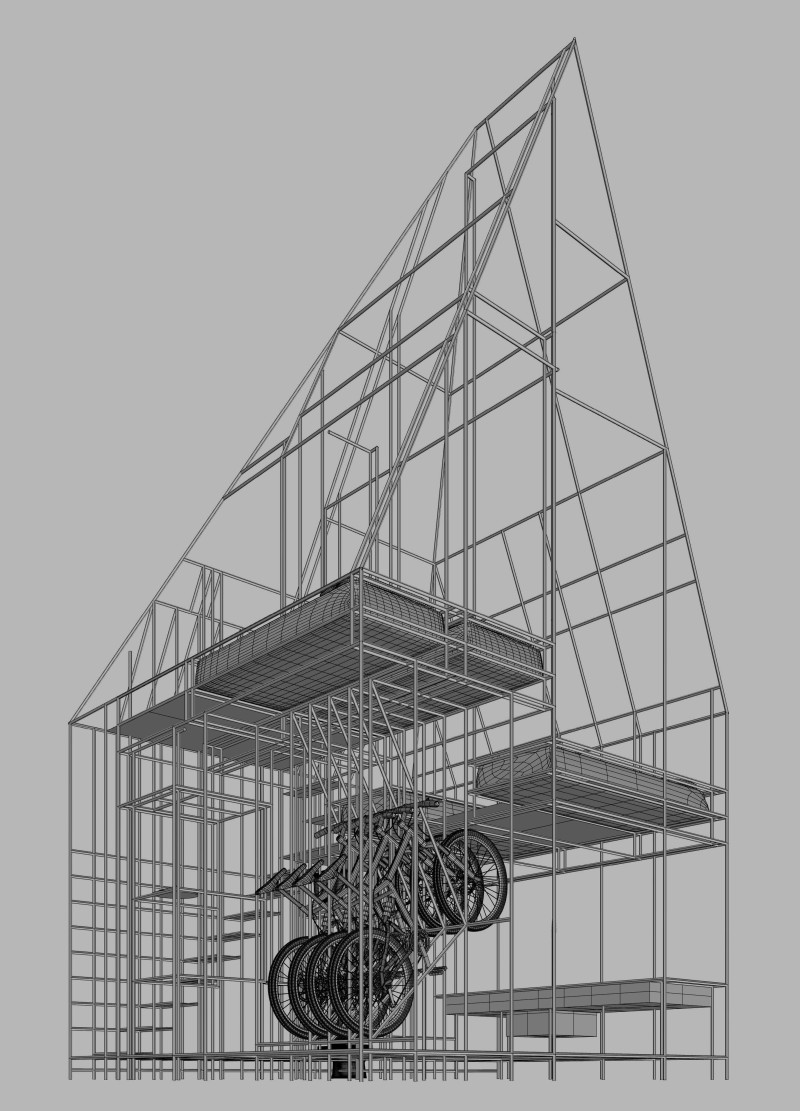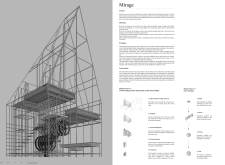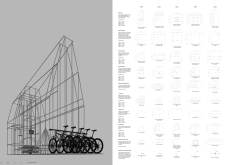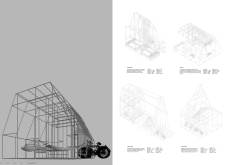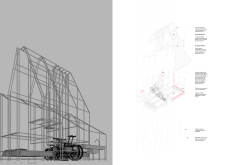5 key facts about this project
Functionally, Mirage serves as a versatile public space that can accommodate a variety of activities. Designed for use as community workshops, exhibitions, and social gatherings, the project emphasizes flexibility, allowing for dynamic reconfiguration based on the requirements of its occupants. The layout is carefully zoned to create distinct areas for different activities while maintaining an overall cohesive flow. This attention to functionality ensures that the space can be utilized optimally, catering to both individual needs and collective activities.
Key details of the project include its structural composition and innovative use of materials. The primary framework is constructed from steel, providing a durable spine that supports the building's dynamic forms. This choice not only enhances the structural integrity but also complements the clean lines and modern aesthetic envisioned by the design team. Translucent plastic panels, specifically polycarbonate, are incorporated into the roof and side walls, allowing natural light to flood the interior spaces. This visual connection to the outside reinforces the idea of bringing the natural environment indoors, enhancing the overall user experience.
Wood is employed within the project for flooring and various internal elements, adding a touch of warmth and enhancing the sensory dimensions of the space. The inclusion of glass ensures visibility and transparency, bridging the indoor and outdoor realms and encouraging a sense of openness. Additionally, bicycle components are cleverly integrated into the architecture to symbolize urban mobility and the importance of sustainable transportation methods. This thoughtful inclusion accentuates the project's commitment to fostering a culture of environmental awareness and active lifestyles.
Mirage further distinguishes itself through its unique design approach that emphasizes modularity and adaptability. The architecture embraces a modular design principle, allowing for easy assembly and potential reconfiguration in response to changing community needs. This flexibility is particularly significant in urban environments where demands can shift rapidly. The design processes employed to achieve this include extensive analysis of the structural rhythms, optimizing layouts for various activities, and exploring innovative forms that fulfill functional constraints while enhancing overall aesthetics.
As a whole, Mirage stands as an exemplar of contemporary architectural thought that integrates sustainability, flexibility, and community focus. This project not only provides a physical building but also fosters connections among individuals in an urban setting, addressing both social and environmental concerns. The innovative use of materials and structural elements underlines the project's commitment to creating a reliable and engaging space.
For those interested in exploring the intricacies of Mirage further, delving into the architectural plans, sections, and designs will unveil deeper insights into the creative processes and concepts that shaped this project. Reviewing these elements will provide a more comprehensive understanding of how the architecture is designed not just as a building, but as a vibrant part of the urban landscape.


